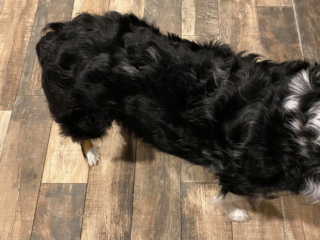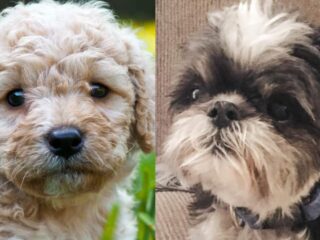If you are familiar with the Samoyed breed, you already know they have one of the most amazing fur coats among all dog breeds.
Not only does their white fluffy fur make them absolutely adorable, but it is also important for their overall well-being and way of living.
Because Samoyeds are known for having this amazing fur, owners oftentimes become concerned when their Samoyed isn’t as fluffy as others of the same breed; there are many different reasons why this could be happening.
If your Samoyed is not fluffy, this may occur from several common causes including the dog’s genetics, possible health issues, current grooming methods, or age!
If you are interested in learning more about why your Samoyed might not be as fluffy as others, and why this is, then keep reading!
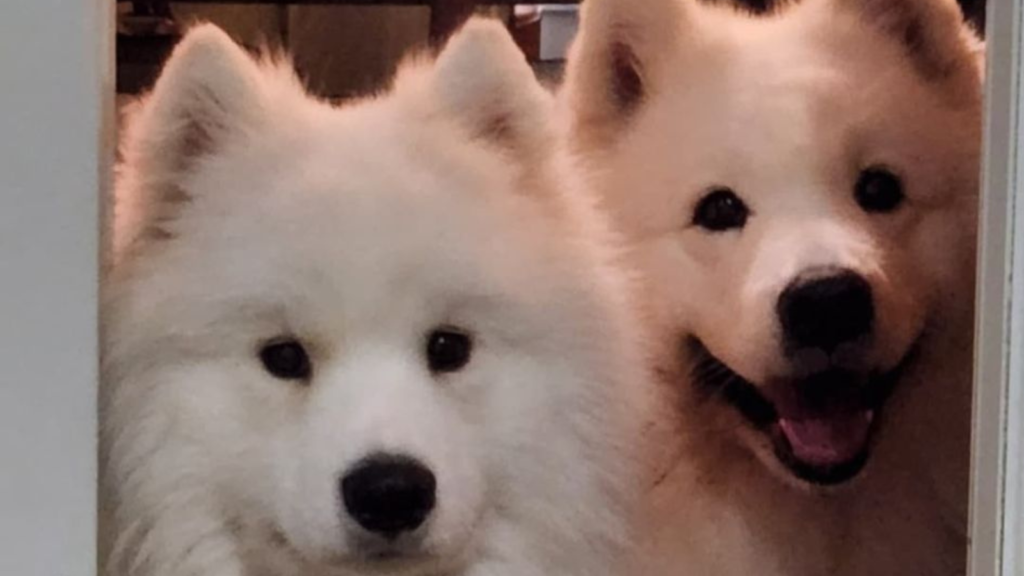
What Makes a Samoyed Fluffy?
Before we dive into why a Samoyed is not fluffy/is becoming less fluffy, let’s begin with why they are fluffy in the first place! It is important to know why Samoyeds have their unique, fluffy white fur.
The main reason Samoyeds are fluffy is because of their double coat! This coat not only makes them look adorable but helps them maintain their body temperature in different climates.
Normally all Samoyeds are born with fluffy fur and some owners even notice as their dogs get older, their coat becomes even fluffier! This happens because Samoyeds will typically grow more hair as they reach older ages.
Disclaimer: This post may contain affiliate links. We only recommend high-quality products that are used and recommended by real owners. If you use these links to buy something we earn a small commission.
Having thick, double-coat and fluffy fur is crucial to the Samoyed breed seeing as they were originally bred for pulling sleds and herding in the freezing cold temperatures of Siberia, which is where this breed originated.
There are also many other aspects that make Samoyeds have fluffy fur including genetics, grooming methods, etc.
If your dog’s parents both have fluffy fur, it is likely that your puppy will have fluffy fur as well; however, if your dog’s parents have thinner, straighter hair, then there is a chance that your dog could have less fluffy hair than other Samoyeds.
NOTE: Even if only one of your dog’s parents doesn’t have fluffy fur, your dog could still inherit less fluff as well.
Why are Some Samoyed Fluffier Than Others?
Like all other dog breeds, there are small differences between each individual dog. For Samoyeds, some dogs’ fur may be fluffier than others, but why is this?
Most often, Samoyeds that appear less fluffy than others generally look this way because their genetics, the weather they live in, or simply the way they are being groomed.
As mentioned above, if your Samoyed’s parents have thinner/less fluffy fur, it is likely that your dog will develop this too!
There is also the possibility that your Samoyed is not purebred. If a Samoyed is mixed with another breed that doesn’t have as much fluffy fur as the Samoyed, it is likely that the Samoyed puppy mix will not be as fluffy too!
Some less fluffy-haired dog breeds that Samoyeds are often mixed with include:
- Golden Retriever
- Akita Inu
- Poodle
- German Shepherd
- Great Pyrenees
It is important to remember that along with genetics, Samoyeds also go through different hair growth cycles.
If you notice that your dog doesn’t seem as fluffy as others, it may be because it has not reached the phase in its hair growth when the fur becomes fluffy (this usually happens at around 4 months old)!
TIP: Don’t worry if your Samoyed puppy doesn’t seem as fluffy as other Samoyeds, your dog will eventually get to that fluffy stage as well!
Weather can also be a major factor in how fluffy a Samoyed is. Most dogs are able to adapt to different climates because of their fur, especially if they are double-coated, the same goes for Samoyeds.
Seeing as they are sledding dogs and originally bred to be in very cold weather, their double coat and fluffy white fur were made for being in the snow and cold climates.
However, they are still able to live in hot climates as well! If you own a Samoyed, you have probably realized that they shed more along with seasonal changes.
You may also notice that their fur begins to thin out naturally when they are in warmer environments. This happens in order to ensure that the dog doesn’t overheat!
Because the fur does get thinner in the warmer weather, this could cause your dog to look less fluffy than other Samoyeds who live in colder climates.
NOTE: Samoyeds naturally shed twice a year, if you notice your dog is less fluffy, it may have simply shed faster than other dogs you may see.
As for colder weather, Samoyeds typically gain more fur and fluffiness; however, if the weather is extremely dry, it could have the opposite effect.
Sometimes Samoyeds who are in extremely cold, dry environments will have more brittle fur that is likely to fall out because of the harsh weather.
Lastly, Grooming is one of the most popular ways that owners/groomers get a Samoyed’s fluffy fur looking great!
This is typically another reason why some Samoyeds will look more fluff than others, they simply have great, well-taken-care-of, fur!
There are many different ways to groom a Samoyed to make them look as fluffy as possible; sometimes owners who notice their dog not looking fluffy can fix this by simply trying different grooming methods.
We will talk more later on in this article about grooming methods that will make your Samoyed extra fluffy, keep reading to learn more!
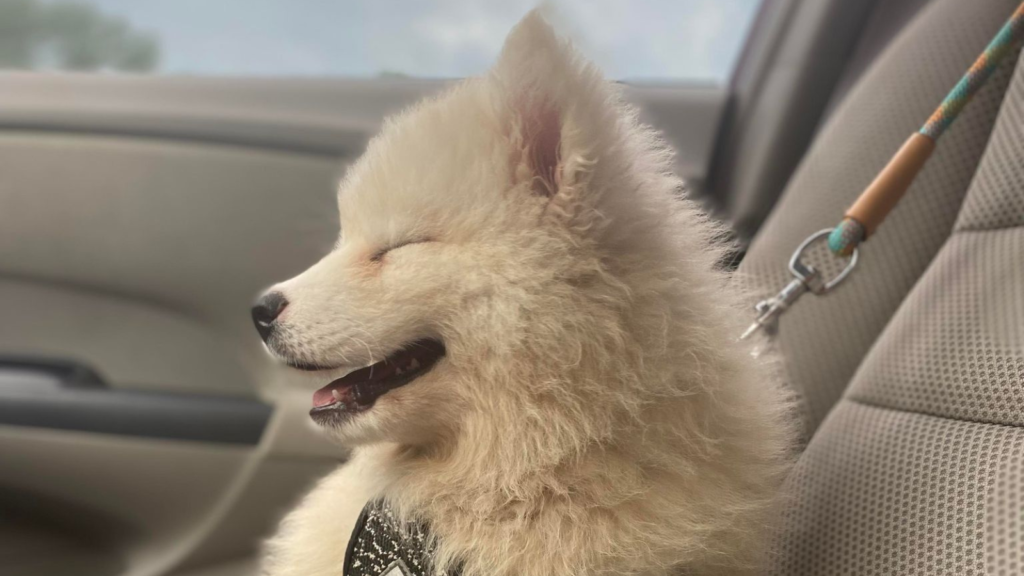
Why is My Samoyed Not Fluffy?
There are also many, more serious issues, that can lead to a Samoyeds fur falling out or becoming thin/less fluffy.
The most common reasons Samoyeds lose their fur, or they slowly become less fluffy, is because of underlying health issues, old age, medications, and certain grooming methods.
Let’s break down each situation that can cause Samoyed’s beautiful fur to become thin or less fluffy.
#1. Health
The two most common health problems that Samoyeds are prone to include hypothyroidism and diabetes; both of these can lead to dry/brittle hair that falls out.
NOTE: If your Samoyed has diabetes, you may notice their fur falling out in clumps.
There are also other health problems that can affect your dog’s fur, Samoyeds tend to struggle with these health issues the most:
- Heart issues
- Cancer
- Skin issues
If you notice your Samoyed losing a lot of fur or becoming less and less fluffy (especially very suddenly), this may be a sign that there is an underlying health condition. It is best to visit a vet to rule out any health problems causing the loss of fur.
#2. Age
As mentioned previously in this article, some Samoyed owners notice that their dog actually gains more fur as they grow older.
However, like most dog breeds, as Samoyeds get older, they can also begin to lose more fur. This will make them appear less fluffy than they were when they were puppies.
Don’t be worried if you notice your dog’s coat thinning out because of their age, normally there are no underlying health issues, they are simply just getting older!
#3. Medications
Medications go hand in hand with health issues. A lot of the medications prescribed for the health problems listed above will cause hair thinning and hair loss.
It is important that if your Samoyed must take medications that cause these symptoms, you maintain their diet and exercise so that they can stay the healthiest they can possibly be!
#4. Grooming
While grooming can make a Samoyed look extra fluffy, it can also be the cause of a Samoyed’s fur looking thinned out, or in rare cases, even causing the fur to fall out.
It is important to ensure that you use the best grooming tools for your Samoyed and its fur. If you are too harsh on the dog’s hair, it may cause extreme damage or breakage to the hair.
PRO TIP: If you are interested in the best grooming tools for your dog, you can find them by clicking here now!
If you are blow-drying your Samoyed with a brush meant to slick the hair down, this will not help with the fluffy look you are trying to achieve.
It is also important not to use products that weigh the hair down or that strip the hair of its natural oils; this is key in making sure that your Samoyed keeps its fluffy look.
If your Samoyed is not fluffy, there are products that can help with this too, as well as different diets and foods that will help the overall look, feel, and fluff of the fur!
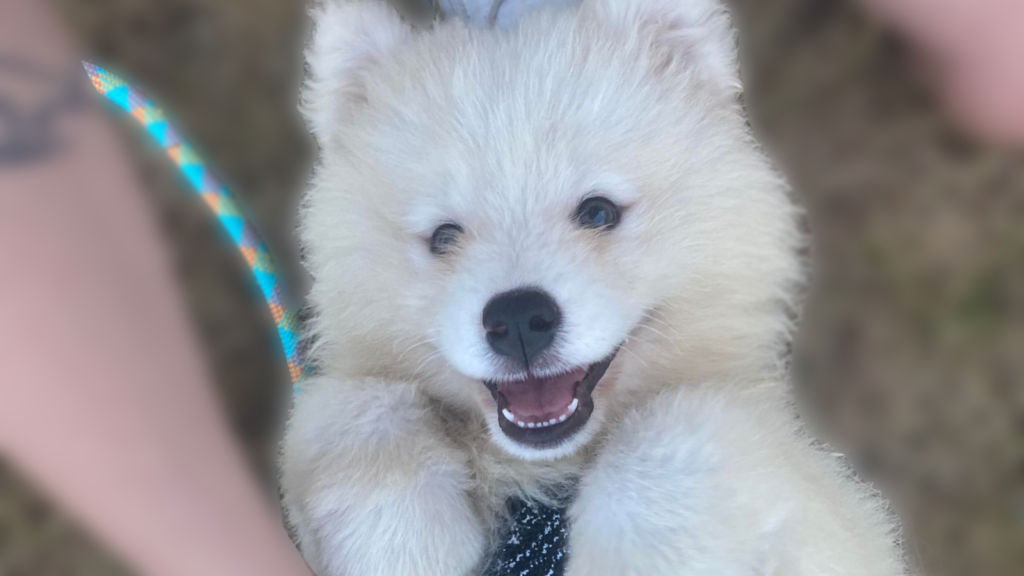
How Can I Make My Samoyed Fluffier?
One of the main goals of Samoyed owners is for their dog(s) to look great! This is usually easy to do with a Samoyed who normally has a lot of fluffy fur; however, for dogs with less fur, or thin fur, this can be a struggle.
There are many ways that you can make your Samoyed’s fur look fluffier, the two most important are making diet changes and using certain grooming techniques!
Diet plays an important role in the overall health of a Samoyed. If their health is in bad shape, it is likely that their fur will be too.
Diet can help a Samoyed’s fur grow and look fluffy. Here are some of the most common foods that Samoyed owners have given their dogs, and seen results in fur growth/fluff:
- Chia seeds
- Oats
- Salmon
- Eggs
- Liver
- Tuna
- Almonds
- Coconut
Vitamins and oils are also very helpful in getting a Samoyed’s fur looking great! Here are some of the most beneficial vitamins and oils for getting/maintaining fluffy fur:
- Omega-3
- Vitamin B12
- Vitamin D
- Calcium
- Fish Oil
- Flaxseed Oil
- Sunflower Oil
- Olive Oil
PRO TIP: You can even try giving your Samoyed a unique bath that can help with their fur health! Two popular methods are bathing the dog in oatmeal and corn starch baths.
Consistent grooming is key in making sure your Samoyed maintains its fluffy fur. Grooming techniques are also very important; even if your Samoyed has thinner, less fluffy fur; grooming techniques can make them look great!
One of the most popular grooming methods is the back brushing technique. This method is when you brush from the tip of the tail towards the head instead of the opposite way like normal.
This creates a teased effect and can make the fur look way fluffier than normal!
NOTE: While this method does work, it is important to make sure you aren’t hurting your dog or being too rough, this could cause more harm than good and even damage the hair if done wrong.
Why is My Samoyed’s Tail Not Fluffy?
A Samoyed’s fluffy tail is one of its most commonly known characteristics. If you are concerned because your Samoyed’s tail isn’t fluffy, there are tail-specific grooming techniques that can be used to help!
If your Samoyed’s tail isn’t fluffy, it is probably because it has naturally fine hair (often caused by genetics), or is experiencing hair loss. One of the easiest ways to get your dog’s tail looking fluffier is to use the right grooming techniques!
One grooming method that seems to work the best when trying to fluff a Samoyed’s tail is the back brushing technique mentioned previously. This helps the fur fluff up and can make even a thin-haired tail look fluffy.
Hair loss on a Samoyed’s tail is unfortunately something that a lot of Samoyeds will have; however, there is typically a reason why this happens.
Here are some of the most common reasons why Samoyeds will begin losing hair on their tails:
- Atopy — An allergic skin disease caused by inhaling allergens such as pollen, dust, mold, etc.
- Mange — A skin disease caused by parasites on the dog’s skin and hair follicles. This can not only cause hair loss but skin lesions as well. (It is very important to get this treated immediately!)
- Fleas — Fleas typically cause hair loss after a dog develops an infection because of them, fleas love to gather on parts of a dog’s body such as the ears, eyes, chest, and tail!
- Hormonal problems — Hormonal issues are very common for Samoyeds; they are also known to cause hair loss. The tail is one of the first places that Samoyeds owners have noticed their dogs losing hair if they have a hormone problem.
- Old Age — Old age is one of the most common reasons why Samoyeds will begin losing hair not only on their tail but also the rest of their body, and a lessening of their overall fluffiness.
While we strive to give the most accurate and helpful information about your pet’s health that we can, this article is meant to be informational only and not medical advice. Never disregard, avoid or delay in obtaining medical advice from your veterinarian or other qualified veterinary health care provider regardless of what you have read on this site or elsewhere.


